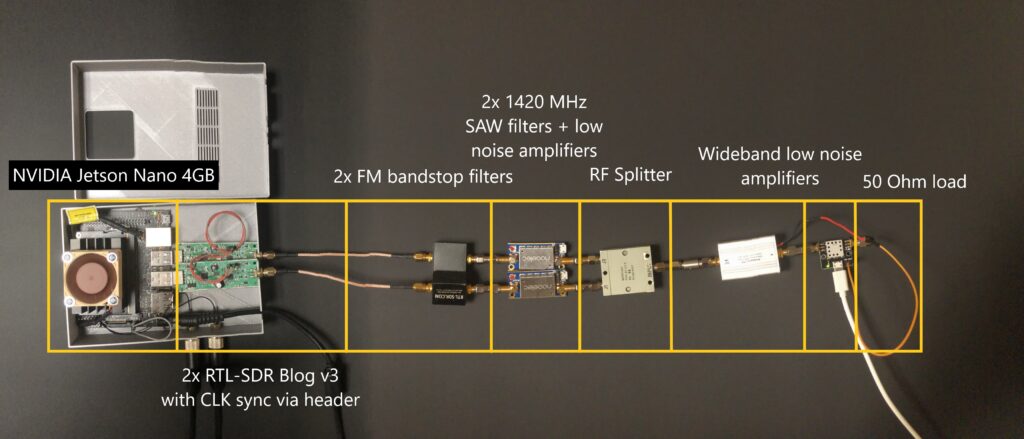Evan Mayer (@millijanskys) has recently released some code called “effex” that allows you to use two RTL-SDR dongles as an interferometer for radio astronomy and other experiments.
The hardware used is two RTL-SDR Blog V3 dongles with synchronized oscillators via the selectable clock headers, two 1420 MHz filtered LNAs, a splitter and noise source consisting of a 50 Ohm load and wideband LNA, and a NVIDIA Jetson Nano GPU single board computer. We note that Evans code should also run on our KerberosSDR with some modifications to enable the built in noise source during calibration.
To add to this Evan wrote to us explaining how this code might be used:
You could start to do some basic interferometric imaging by adding more coherent channels. This is exactly what Daniel Estévez just did with USRPs and GNU Radio at the Allen Telescope Array.
Did you see the “picture” of the supermassive black hole shadow released by the Event Horizon Telescope collaboration in 2019? The “ring of fire” or “donut” image? Daniel’s image and that image were created by “aperture synthesis.”
In aperture synthesis, the signals from each pair of antennas distributed across an area can be cross-correlated to measure one component of the 2D Fourier transform of the radio brightness distribution on the sky. But, you need coherent receivers (or REALLY good time stamps) to cross-correlate the signals from the antennas. Get enough pairs of antennas, and you can start to more fully sample the 2D Fourier space of the sky brightness distribution, which you can then use to reconstruct a real image.
This is how distributed radio arrays like the EHT work, as well as localized ones like ALMA or LOFAR.
I should mention that the reason people do this at all is that the image resolution of this technique scales with the distance between the antennas. It no longer depends on the size of the individual dishes. That’s why the EHT used a lot of telescopes very far apart, to see a very compact object very far away.

